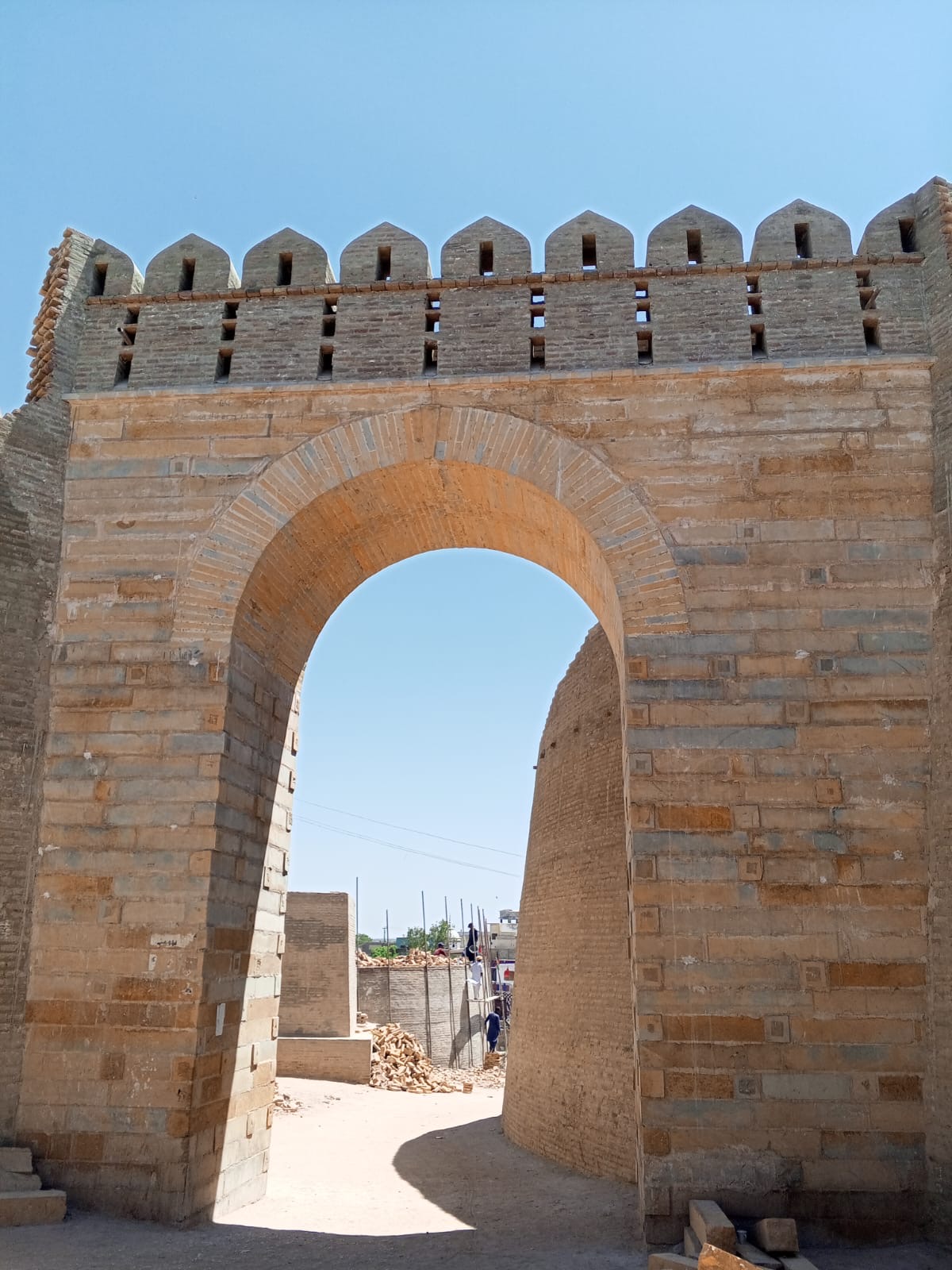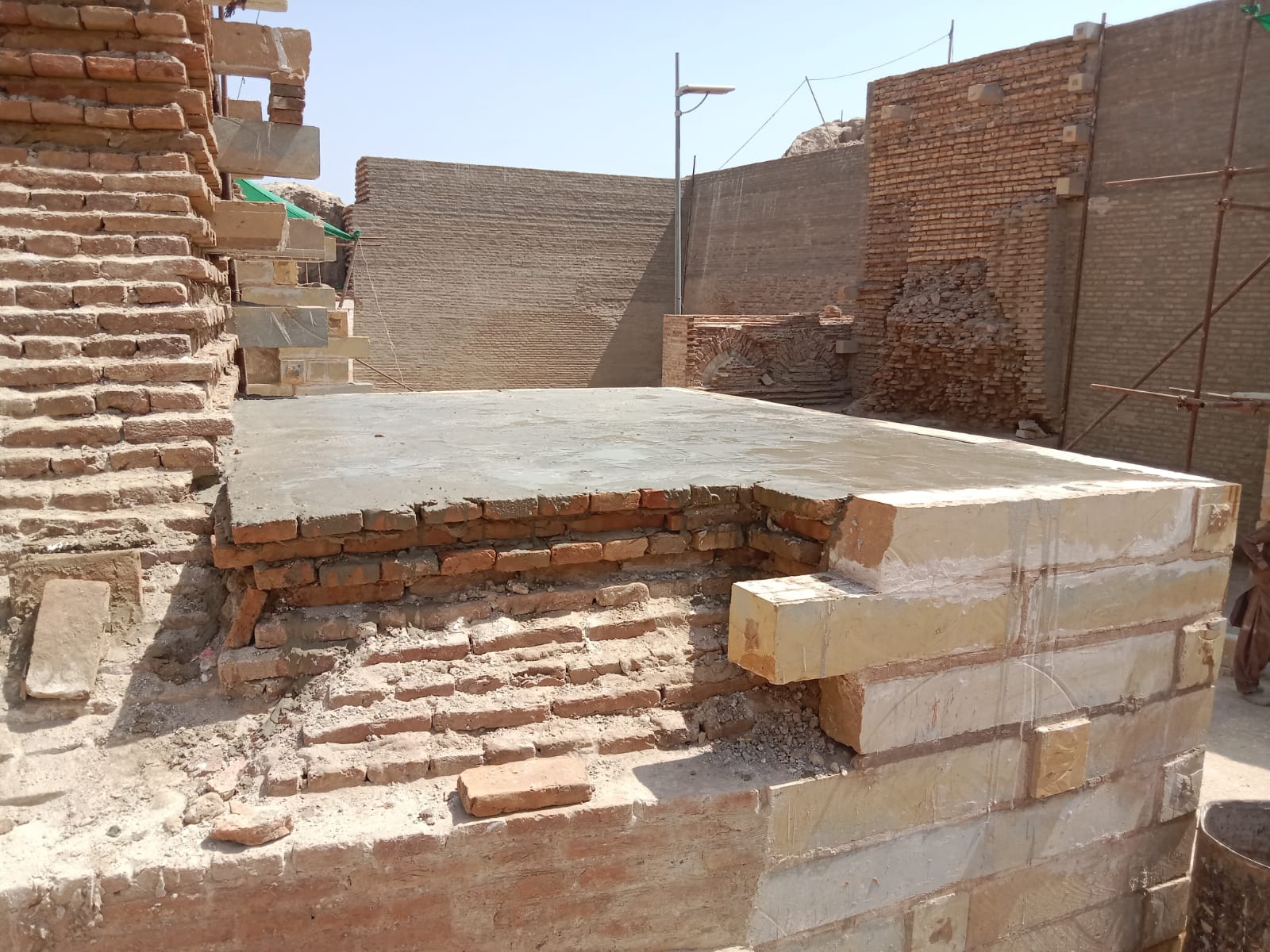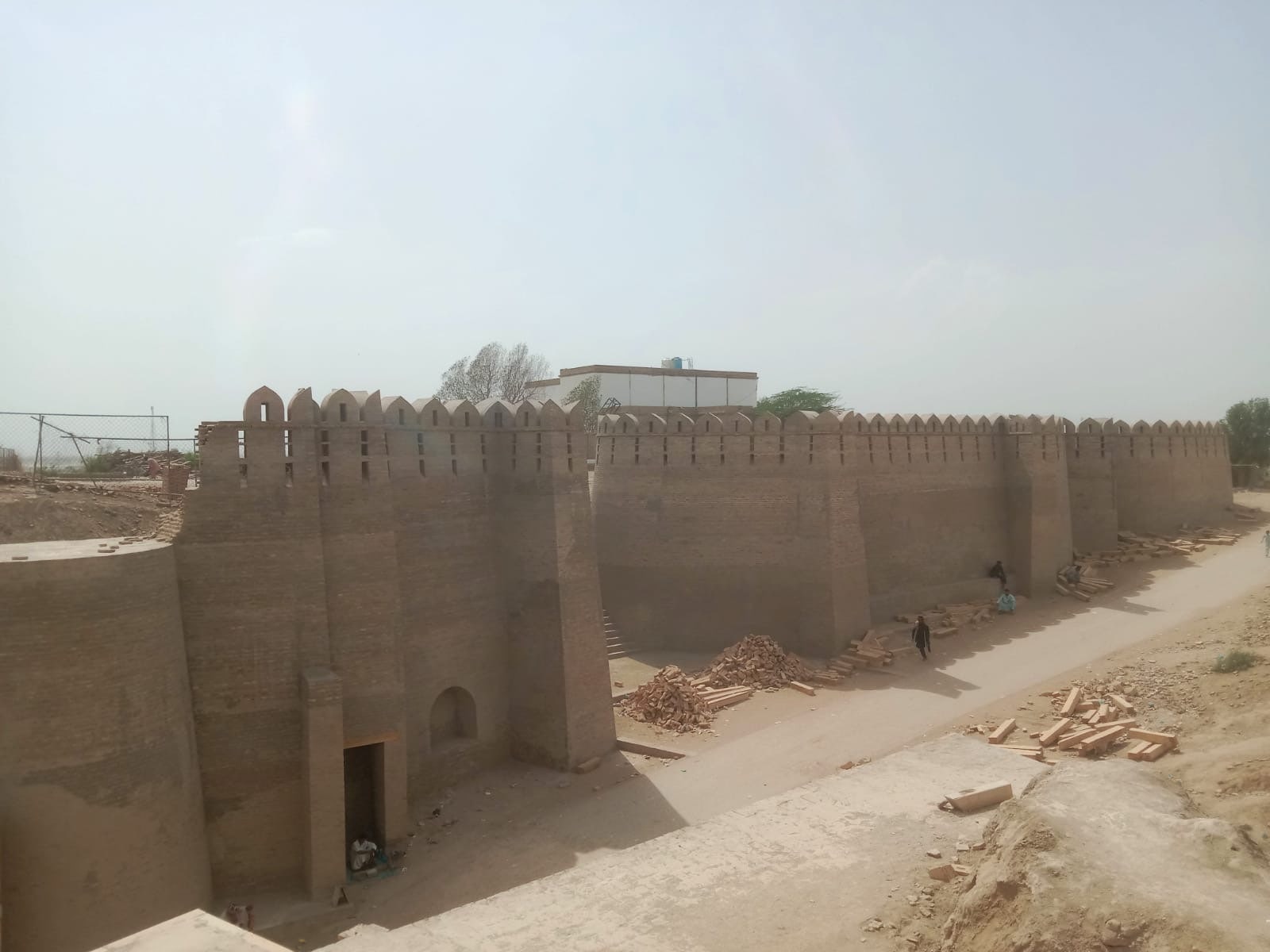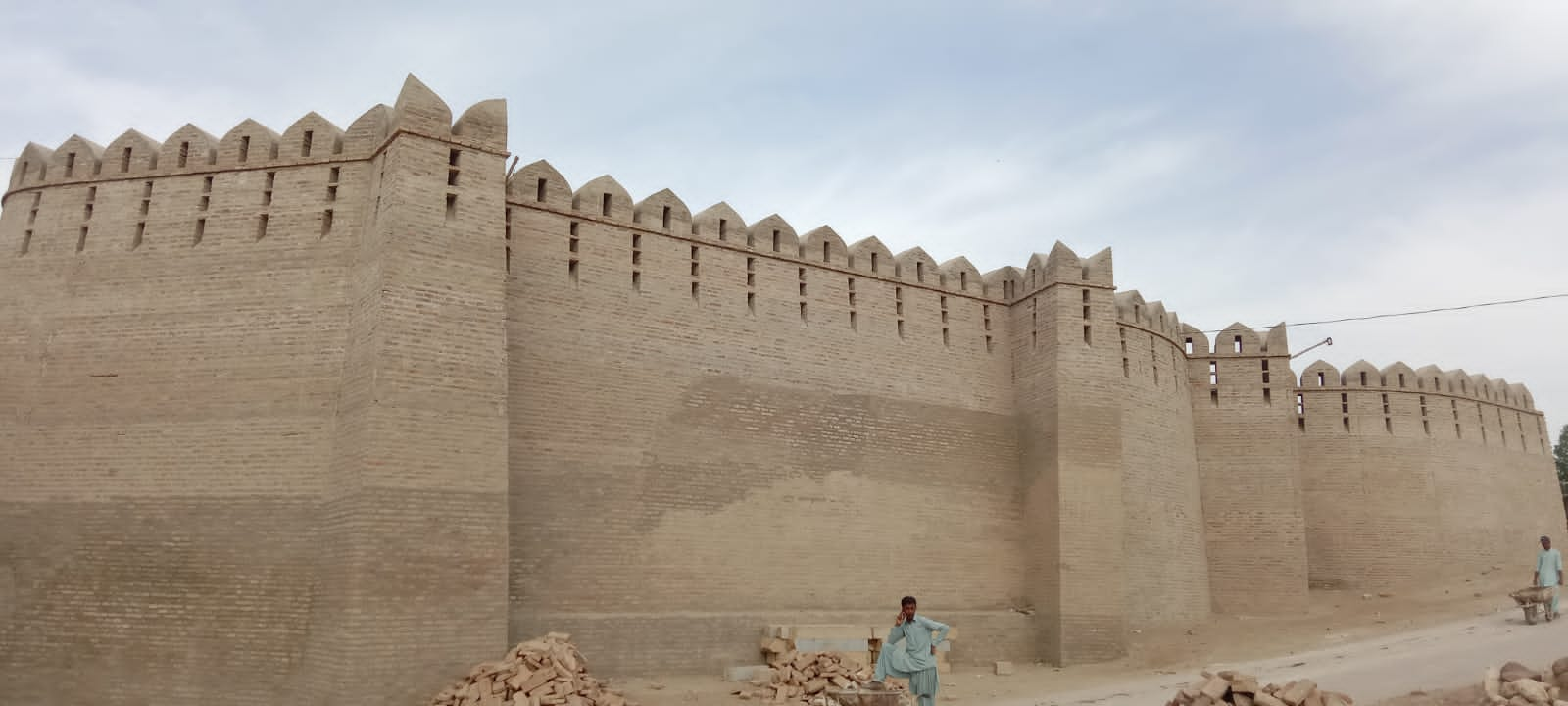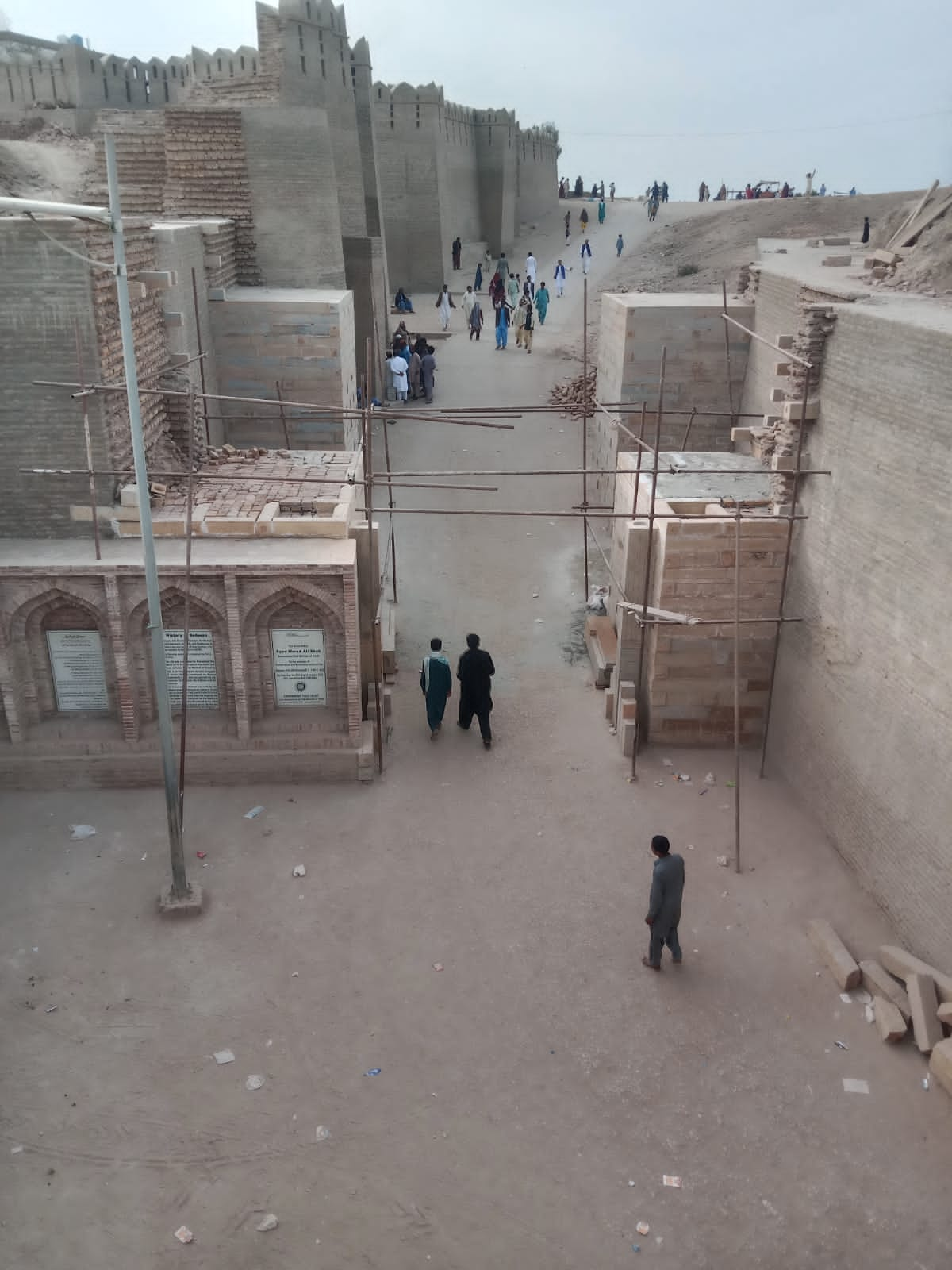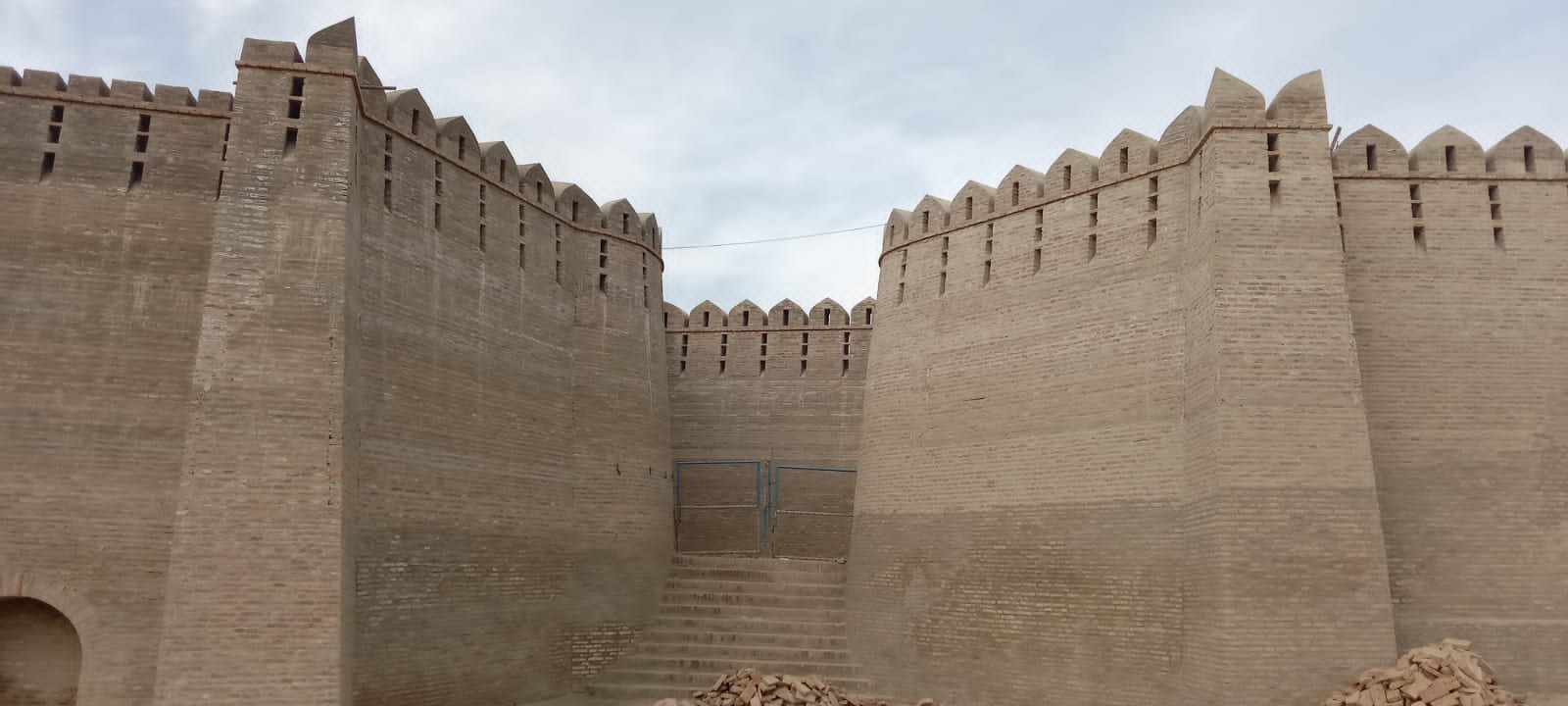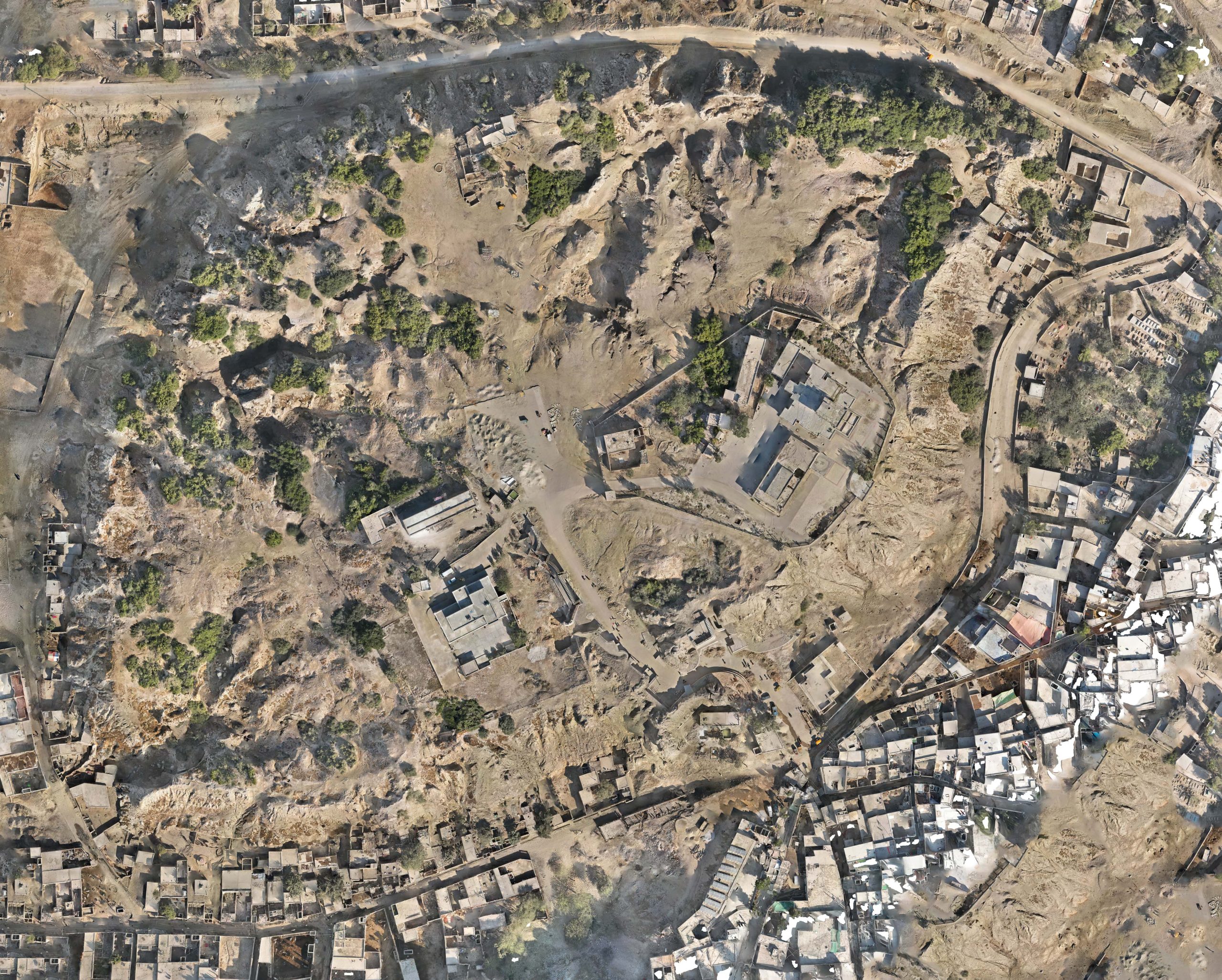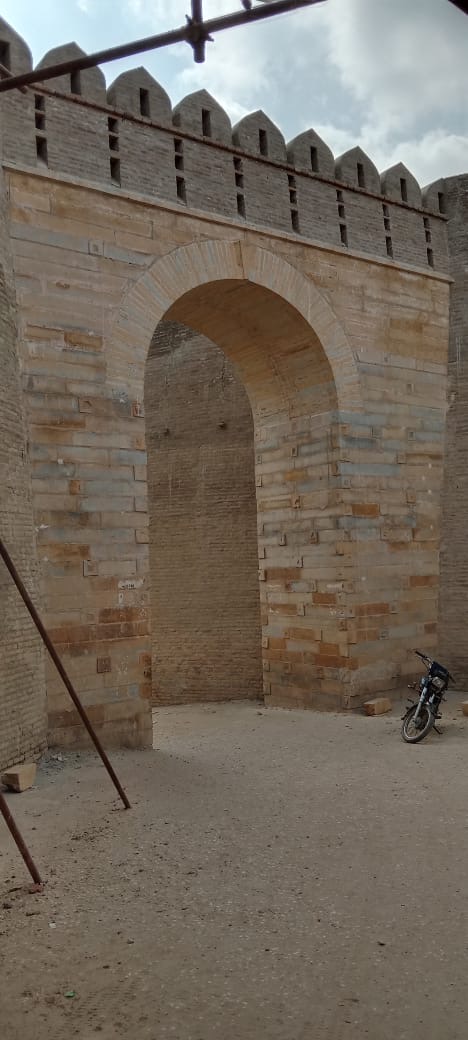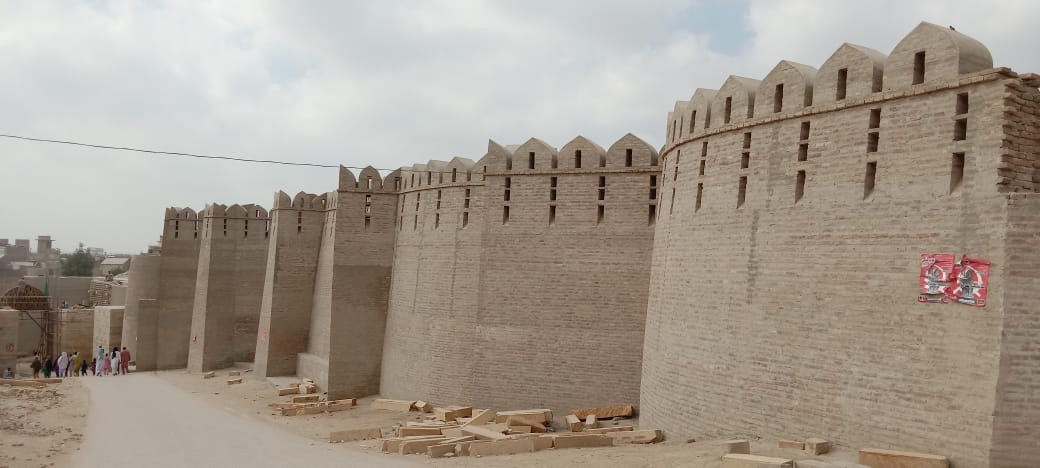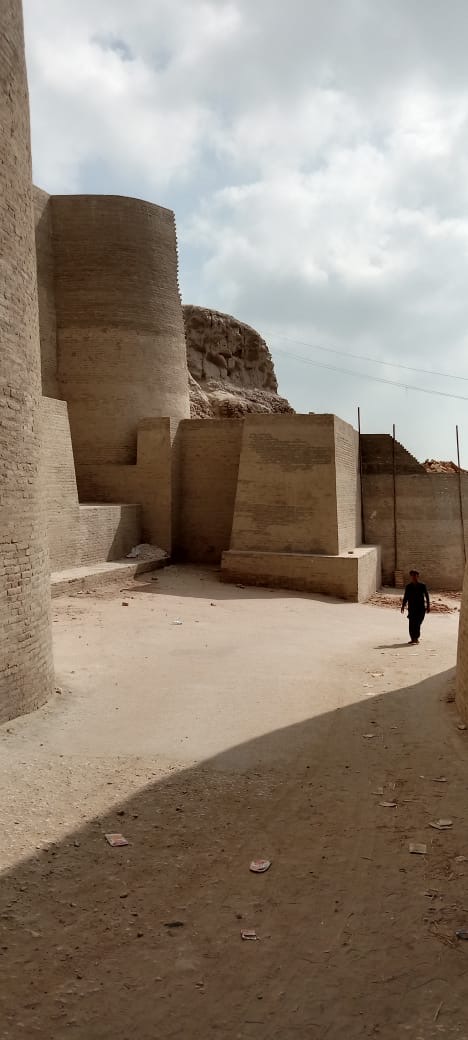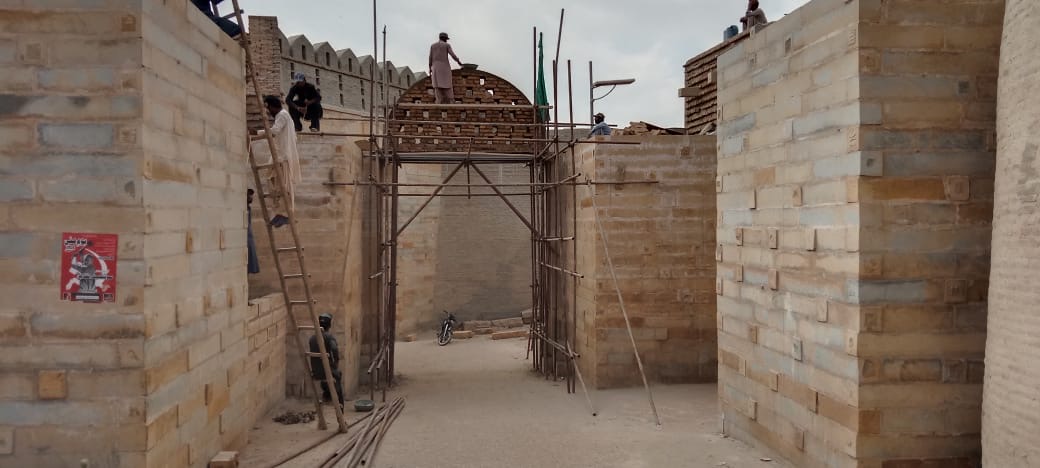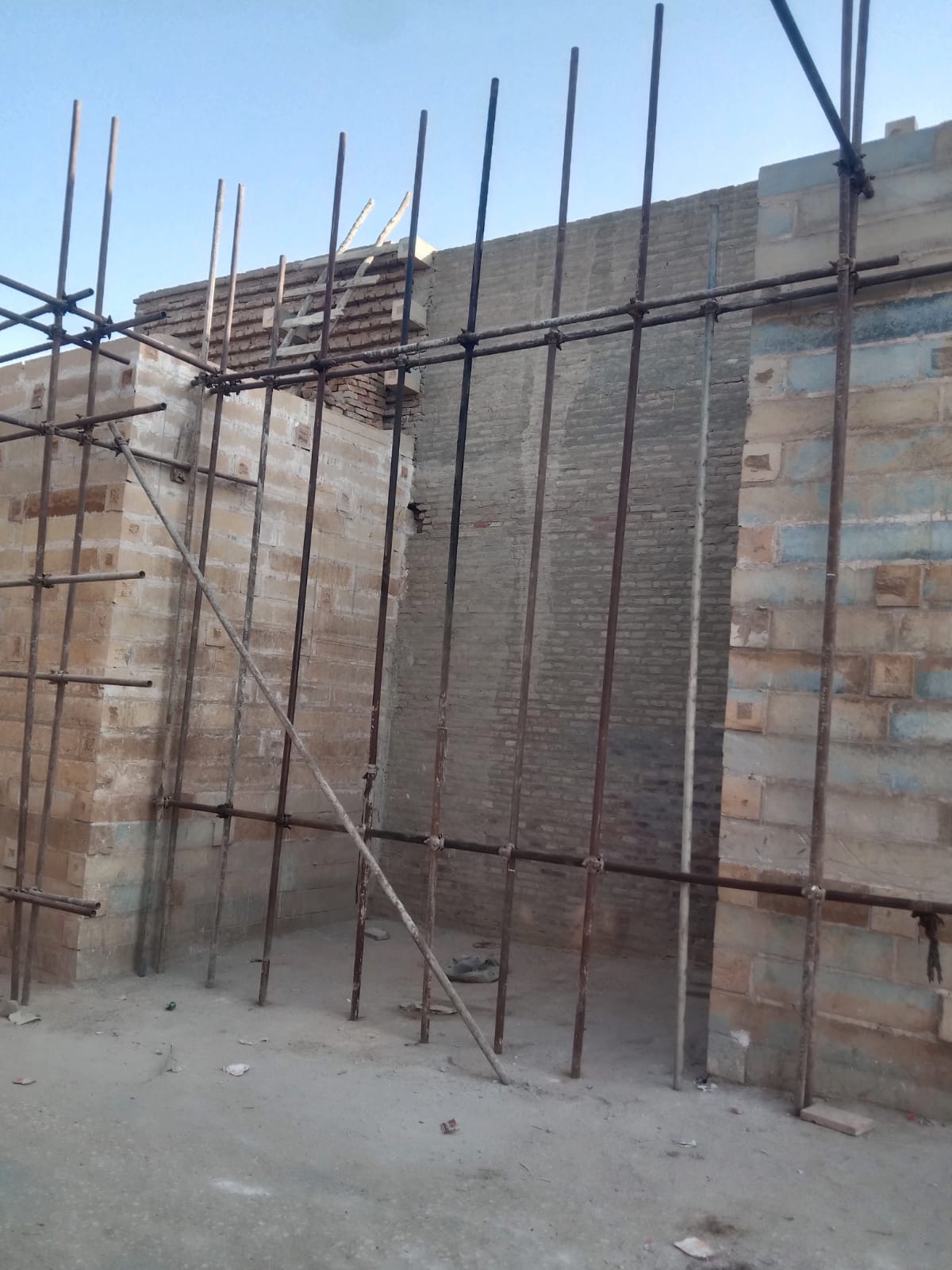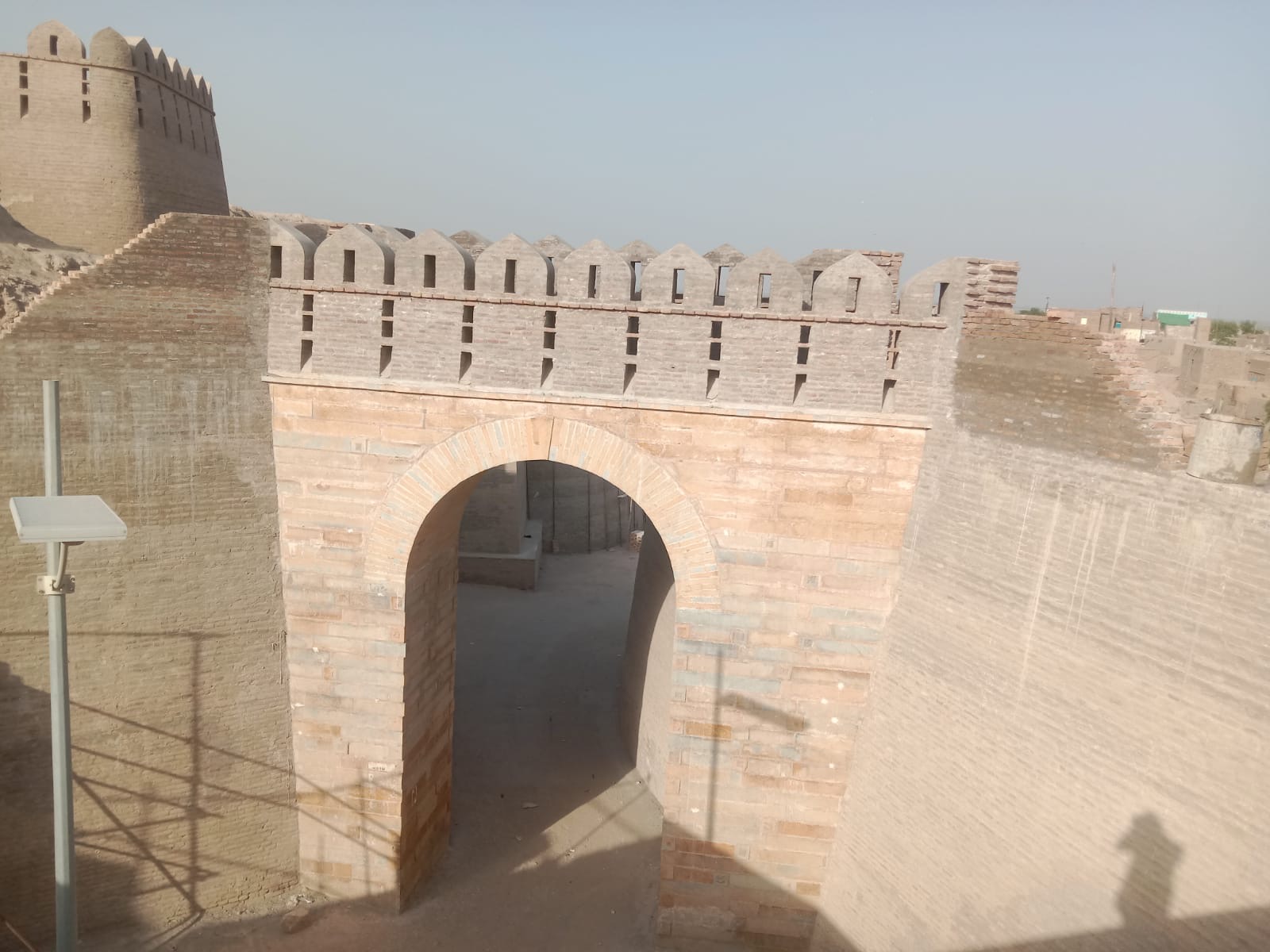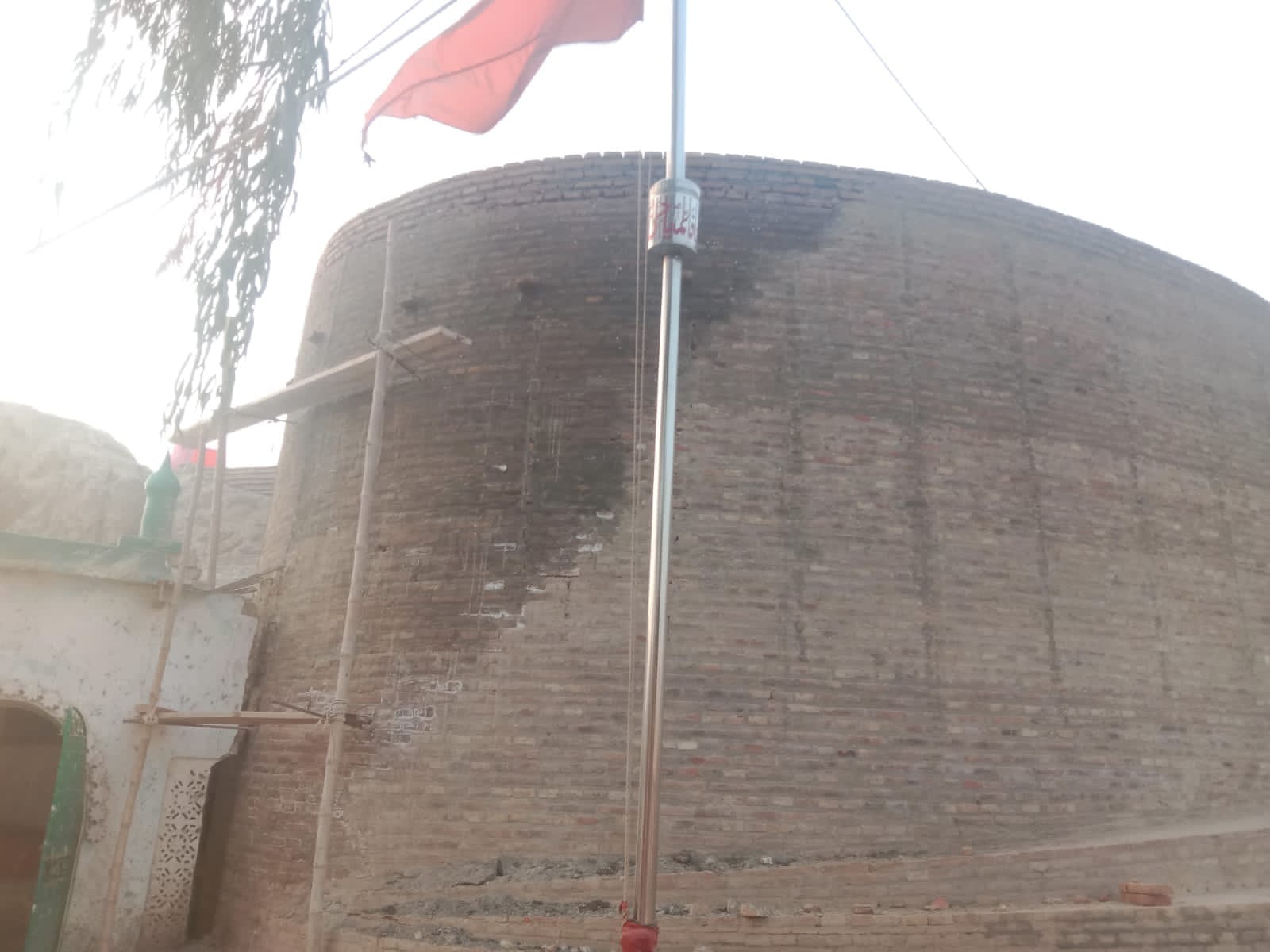Sehwan Fort is considered to be the oldest fort in the sub-continent. Sehwan, it is believed, existed before the Vedic period (around 1500 B.C.E.). Some etymologists posit that since the city is established on the bank of River Indus, all its names relate to the river; Sharosat, Sadosat, Sawistan, Sidustan etc. Certain scholars have associated the name of Seiwistan with Seythians. In the second and third centuries B.C.E, the region of Sehwan was dominated by Seythians, and the place, these scholars argue, came to knowns as seiwistan.
The Sehwan Fort is strategically located on the bank of Indus River and surrounded by the Aral Wah canal. On the southern side of the fort are the Laki Hills. Sehwan Fort protects the Laki Pass, which was considered to be the key to the country, because invaders had to pass through it to attack the region. Manchar Lake, one of Asia’s biggest fresh water lake, is in close proximity to the fort.
The ancient fort of Sehwan is built with burnt bricks, and is located north of the town, on a towering hill. Parts of the walls and towers are in a ruinous state. Four main ravines have cut the mound, of which two are presumably the old entrances of the citadel. The fifth ravine, on the south, is the main entrance to the fort. The thickness of the wall, the quality of construction, and decorations such as carved lintels, glazed tiles, and door frames suggest that the building was built for royalty. Remains of four collapsed domed structures have also been discerned. About thirty towers, and a moat protecting the citadel are on its southern side.
All the bastions were irregular, in congruence with the topography of the mound on which the fort is built; the fortification wall was also constructed according to the shape of mound. The bastions are joined to the outer side of the wall, so the guards stationed on them could have a clear view of the enemy at its base. At present, the shape of the bastions appears semi-circular, and of varying sizes. The ones protecting the gate are colossal. The diameter of the bastions is approximately twenty feet; wide at the bottom, becoming progressively narrower as they go up. The distance between bastions is about two hundred and fifty feet.
The main entrance is on the north, with a curved passageway leading to the central gate. Four bastions defend the passageway, and the main gate, two of which are still in reasonable condition. The main door of the fort is discernible. The main arched gate is high enough for a man riding an elephant to pass through it with ease. Behind the door is a bigger arched door. Inside and outside the main entrance, remains of guard rooms are discernible.
In 2021, Endowment Fund Trust for Heritage of Sindh (EFT) along with Centre for Documentation and Conservation (CDC) conducted a survey of the fort of Sehwan. The fort was in an extremely dilapidated condition. In the survey, with the aid of drawings and figures by the French Archaeological Mission, they managed to demark the entrance gate from the once indecipherable ruins.
The Chief Minister laid a stone for initiation of Restoration work on the fort. The restoration work of the fort started in January 2022 by EFT and will be completed in 4 years.
